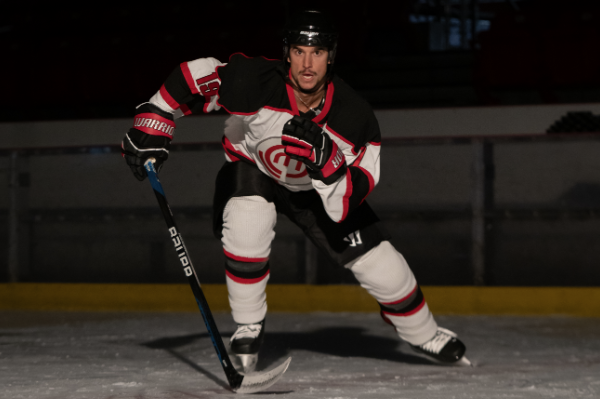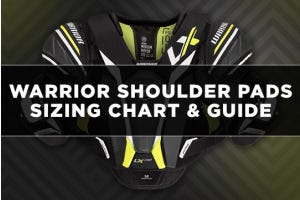What is a Backcheck in Hockey

Backchecking is a critical aspect of hockey's defensive play. It refers to the efforts of players, usually forwards, hustling back toward their defensive zone to disrupt the opposing team's attack and regain possession of the puck. Whether you're a seasoned player or new to the sport, understanding how to backcheck effectively can significantly impact your team's performance. In this guide, we’ll explore the importance of backchecking, techniques, common mistakes, and professional insights that will help elevate your defensive skills.
In this article we will discuss,
Defining Backcheck in Hockey


Backchecking is the process of tracking back towards your own defensive zone when the opposing team gains control of the puck and is counter-attacking. It’s a proactive defensive strategy where players work to intercept passes, disrupt the opposing team’s play, and prevent scoring chances by applying pressure and using stick positioning effectively. Backchecking is most commonly associated with forwards who have been caught out of position but is a responsibility that all players share.
The Importance of Backchecking in Hockey
Backchecking is essential for any team that wants to minimize the opponent’s scoring chances. A strong backcheck can be the difference between allowing a breakaway or turning the play into an offensive opportunity for your own team. By quickly transitioning from offense to defense, players help relieve pressure on their defensemen and goalie, forcing the opposing team to make hasty decisions and increasing the likelihood of regaining puck possession. It’s a key part of both defensive structure and quick transitions to offense.
Techniques for Effective Backchecking
- Skating Speed: The faster you can skate back into your zone, the better. This speed prevents breakaways and allows you to apply immediate pressure on puck carriers.
- Stick Positioning: Keeping your stick in the passing lanes and using it to disrupt passes is a vital part of effective backchecking.
- Body Positioning: Focus on staying between the opposing player and your own net, angling them away from dangerous scoring areas.
- Player Awareness: Backchecking isn’t just about skating hard; you must constantly assess the developing play, identify open opponents, and anticipate passes.
- Communication: Talking to teammates and knowing when to hand off coverage or take over defending a player is essential for organized backchecking.
Common Mistakes in Hockey Backchecking
- Over-committing to the Puck: Chasing the puck carrier too aggressively can leave passing lanes open, making it easy for the opponent to create scoring chances.
- Skating in a Straight Line: Instead of taking a direct line back to the defensive zone, use an angling technique to push the opponent toward the boards or into less threatening areas.
- Stick Not on the Ice: Keeping your stick in a ready position is crucial for blocking passes and limiting your opponent's options.
- Lack of Communication: Failure to communicate with teammates can result in coverage breakdowns and missed assignments.
How to Practice Backchecking
Improving your backchecking skills requires regular practice and drills that simulate game situations. Here are some drills you can incorporate:
- Transition Skating Drills: These drills emphasize quick transitions from offense to defense, helping players practice getting back into their defensive zone quickly and efficiently.
- 1-on-1 Backchecking Drills: Practice positioning yourself between the puck carrier and your net while using your stick to disrupt passes.
- Team Scrimmages: Incorporating backchecking into scrimmages helps players develop the instinct to backcheck during fast-paced, real-game scenarios.
Professional Insights: Learning from the Best
Backchecking is an art that many of the best players in the NHL have mastered. Here’s what some of the top players and coaches have to say:
Sidney Crosby, Pittsburgh Penguins: “Good defense starts with effort. It’s not always about making the highlight-reel play; it’s about being in the right position and forcing mistakes from the other team.”
Patrice Bergeron, Boston Bruins: “Backchecking is as much about mental awareness as physical effort. You have to read the play, anticipate where the puck will go, and then commit 100% to getting there.”
Barry Trotz, NHL Head Coach: “Teams that backcheck together are the hardest to break down. If everyone is moving as a unit and communicating, it’s nearly impossible to create clean offensive opportunities.”
Frequently Asked Questions
Is backchecking only the responsibility of forwards in hockey?
No, while forwards often take the lead on backchecking after an offensive rush, all players, including defensemen, are responsible for getting back and defending against an opposing attack.
How does backchecking differ between ice hockey and roller hockey?
In roller hockey, the slower pace of the game means players often have more time to transition between offense and defense, but the basic principles of angling, positioning, and effort remain the same.
Can goaltenders contribute to effective backchecking strategies?
Absolutely. Goaltenders can communicate with their defensemen and forwards to ensure everyone is covered and can help guide players into better defensive positioning.
What are some historical examples of effective backchecking changing the course of a game?
One famous example is the 1972 Summit Series, where Canada’s dedication to backchecking helped them come back and win in critical moments against the Soviet Union.
How does backchecking contribute to a team's overall defensive strategy?
Backchecking is essential for disrupting the opposing team’s offensive flow. By applying pressure from behind, it forces turnovers and prevents the opposition from creating high-quality scoring chances.
Ready to improve your defensive game? Check out our selection of high-performance Hockey Skates and gear to enhance your backchecking skills.









Login and Registration Form
or
Create an account